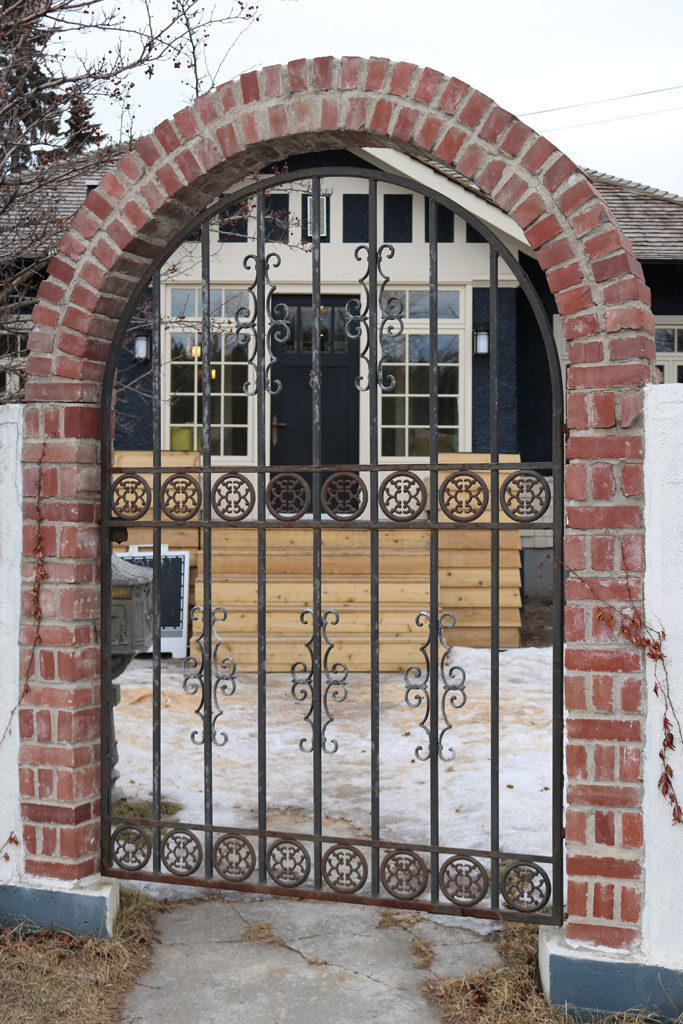1. Legal Suites House Tomorrow’s Heritage Advocates
 We hear time and again that a key reason why someone values heritage preservation is because they have nostalgic memories of an old home from their childhood or lived in one while they were starting out. Many of Calgary’s heritage homes are located in inner-city and established neighbourhoods with declining populations and high property values. The opportunity to rent a secondary suite provides an affordable entry point to these character communities for Millennials and new Calgarians. Walkability, mature trees, and authentic pubs, restaurants and shops get them hooked on heritage. They will think twice when casting their ballots on election day – does their candidate value heritage too? And they just may join CHI and become a heritage advocate.
We hear time and again that a key reason why someone values heritage preservation is because they have nostalgic memories of an old home from their childhood or lived in one while they were starting out. Many of Calgary’s heritage homes are located in inner-city and established neighbourhoods with declining populations and high property values. The opportunity to rent a secondary suite provides an affordable entry point to these character communities for Millennials and new Calgarians. Walkability, mature trees, and authentic pubs, restaurants and shops get them hooked on heritage. They will think twice when casting their ballots on election day – does their candidate value heritage too? And they just may join CHI and become a heritage advocate.
2. Laneway Houses Add Density While Preserving the Main House
 The restoration and retrofitting of the Withrow Residence, overlooking the Bow River at 3210 Parkdale Ave. NW, is a model for achieving densification without demolition. Designated a Municipal Heritage Resource in 2013, Matthew Kennedy and Mark Erickson of Studio North have painstakingly brought this 1911 craftsman style home up to modern livability, while restoring original elements like the interior fir doors and hardware, the claw foot bath, river rock and brick fireplaces, and exterior eave brackets.
The restoration and retrofitting of the Withrow Residence, overlooking the Bow River at 3210 Parkdale Ave. NW, is a model for achieving densification without demolition. Designated a Municipal Heritage Resource in 2013, Matthew Kennedy and Mark Erickson of Studio North have painstakingly brought this 1911 craftsman style home up to modern livability, while restoring original elements like the interior fir doors and hardware, the claw foot bath, river rock and brick fireplaces, and exterior eave brackets.  Exposed to reveal the original construction are reinforced beams, a section of a lath and plaster wall, some of the exterior cladding, and the well in the basement floor. New custom-made wood sash windows were designed to match those in historical photographs. The economics of this restoration was feasible because increased density on this lot was achieved with an 850 sq ft laneway home. With the new Studio North’s Laneway House tucked in the back, the historic streetscape remains unaltered.
Exposed to reveal the original construction are reinforced beams, a section of a lath and plaster wall, some of the exterior cladding, and the well in the basement floor. New custom-made wood sash windows were designed to match those in historical photographs. The economics of this restoration was feasible because increased density on this lot was achieved with an 850 sq ft laneway home. With the new Studio North’s Laneway House tucked in the back, the historic streetscape remains unaltered.
3. Legal Suites Support Heritage Tourism
Who doesn’t love staying at historic BnB’s when exploring the ins and outs of a new city?
 Consider Ann’s story – a single mom living in an original modest home in historic Douglas Park in Vancouver. With housing values spiraling and property taxes becoming unaffordable, Ann was faced with a big decision. Fortuitously, insurance proceeds, resulting from flood damage when the nearby transit system was expanded, provided Ann with the cash to retrofit her basement with a suite. She opted for short term rental as Ann’s Place Air BnB because it offered an attractive income stream, flexibility, and the chance to host interesting visitors from all over the world. Her two young adult children help out. And being a block from the Sky Train station, guests arriving by air don’t even need to rent a car. Ann supplements her BnB income with arts and crafts lessons out of her home studio.
Consider Ann’s story – a single mom living in an original modest home in historic Douglas Park in Vancouver. With housing values spiraling and property taxes becoming unaffordable, Ann was faced with a big decision. Fortuitously, insurance proceeds, resulting from flood damage when the nearby transit system was expanded, provided Ann with the cash to retrofit her basement with a suite. She opted for short term rental as Ann’s Place Air BnB because it offered an attractive income stream, flexibility, and the chance to host interesting visitors from all over the world. Her two young adult children help out. And being a block from the Sky Train station, guests arriving by air don’t even need to rent a car. Ann supplements her BnB income with arts and crafts lessons out of her home studio.
Heritage tourism contributes greatly to a sense of pride in the city’s cultural identity and character communities.
Note: Bed and breakfasts are a discretionary use in Calgary’s residential districts now, providing the owner obtains the required development permit.
4. Suites Support Aging in Place
 The economic, social, and health benefits of keeping seniors in their own homes and communities are well documented. Secondary suites can provide private housing for live-in caregivers or rental income to help with expenses like daily living, home maintenance and property taxes. Many of our heritage communities are experiencing population declines as the baby boomers age and their children have (finally) fled the nest. This frees up space within homes for a secondary suite. Seniors are the keepers of our community heritage knowledge base. They pass on their stories and reasons why they value their home and community history to their tenants or care-givers. Keeping seniors in their homes slows down redevelopment and infill pressures in heritage communities.
The economic, social, and health benefits of keeping seniors in their own homes and communities are well documented. Secondary suites can provide private housing for live-in caregivers or rental income to help with expenses like daily living, home maintenance and property taxes. Many of our heritage communities are experiencing population declines as the baby boomers age and their children have (finally) fled the nest. This frees up space within homes for a secondary suite. Seniors are the keepers of our community heritage knowledge base. They pass on their stories and reasons why they value their home and community history to their tenants or care-givers. Keeping seniors in their homes slows down redevelopment and infill pressures in heritage communities.
5. Legal Suites are Good for the Environment
 Adding a secondary suite while preserving the original home is the ultimate in adaptive reuse. It reduces demolition and construction (landfill) waste, and saves energy spent on manufacturing and shipping new building materials for infill housing. It retains original, mature landscaping; trees provide amazing cooling, air quality and storm-water benefits. Constructing a legal secondary suite within an existing home may be the catalyst to upgrade the home with features like insulation, low-E windows, energy efficient heating, appliances and lighting fixtures. Rental income from the suite and home energy rebates may even offset the cost of these upgrades.
Adding a secondary suite while preserving the original home is the ultimate in adaptive reuse. It reduces demolition and construction (landfill) waste, and saves energy spent on manufacturing and shipping new building materials for infill housing. It retains original, mature landscaping; trees provide amazing cooling, air quality and storm-water benefits. Constructing a legal secondary suite within an existing home may be the catalyst to upgrade the home with features like insulation, low-E windows, energy efficient heating, appliances and lighting fixtures. Rental income from the suite and home energy rebates may even offset the cost of these upgrades.
A new lane-way home can be constructed with green technologies, resulting in a high level of energy efficiency. Check out this youtube video for a great story about a green backyard suite in the historic community of Ramsay – it generates more electricity than it uses!
What is a Legal Suite?
A secondary suite is self-contained anywhere within the main home (often the basement) but secondary to it (smaller). A backyard suite must be smaller than the main house and be contained in a detached building behind the front façade of the main residential building. Examples are a suite located above a garage or a separate “laneway” or “garden” house.
Legal suites contain 2 or more rooms designed to be used as a residence by one or more persons. Suites must have a kitchen, living, sleeping and sanitary facilities, and one parking stall on the parcel. They must meet all building codes for safety and construction and have passed inspection.
Secondary and backyard suites do not have a separate title and cannot be sold independently of the main home. They can be rented out, owner-occupied, or occupied by other person(s) like a family member or care giver.
Secondary Suites: a Win for Heritage
On March 12, 2018 City Council passed the bylaw allowing secondary and backyard suites as a discretionary use in R-1, R-C1, R-C1L districts. This change applies to about 170,000 homes in Calgary, many located in historic districts.
Councillor Farrell moved this amendment
“6. Heritage
a. For parcels listed on the City Inventory of Evaluated Historic Resources, the Development Authority may consider relaxations to parking requirements (including the ability to accommodate the required parking off-site) in order to accommodate a secondary suite or backyard suite while retaining the existing building on site.”
Council asked how many homes would be affected by this change. The answer – around 200. These are not necessarily homes with historic designation but they have been evaluated and their historic significance is acknowledged.
The motion passed with only Councillor Chu voting against the amendment.
What this means… the rules for secondary suites require that one parking stall be provided on site – this means in a garage or a separate pad on the property. Often, it is difficult to accommodate this parking on sites containing historic homes, especially where a backyard suite, like a laneway home, is contemplated. By adding density in the back, the historic home is retained and the whole project becomes economically feasible. Flexibility in the parking requirement is one way to encourage retention of historic homes AND get more homes on the Inventory!
What You Can Do
Spread the word. Share this post. Contact your Councillor. Advocate for reinstatement of the secondary suite construction grant. Ask that it be available specifically to retrofit homes in heritage communities. Suggest that Historic Resource Evaluations be fast-tracked for qualifying secondary suite applicants.
Read CHI’s Advocacy Letter to City Council for more….

